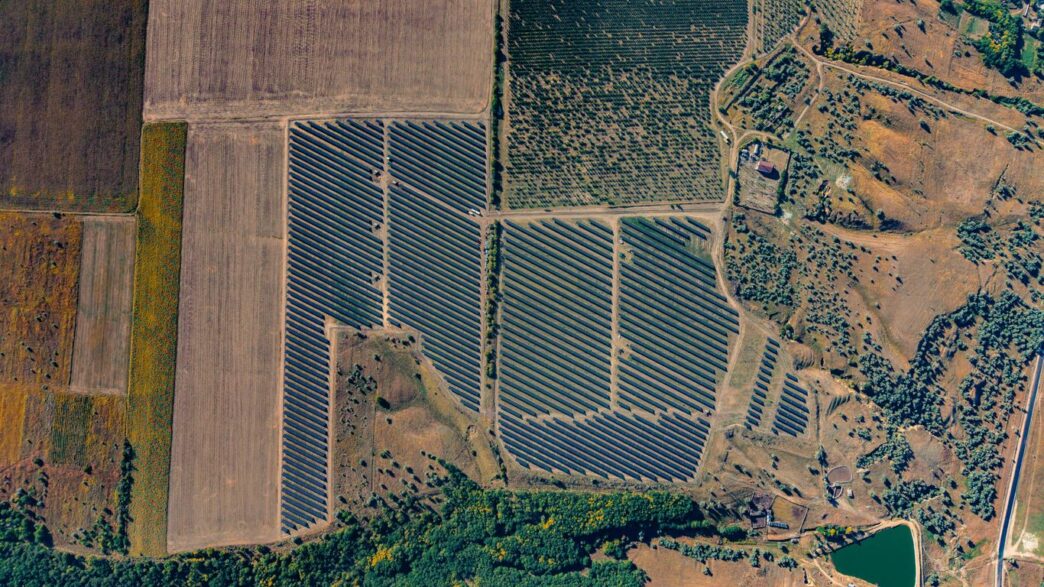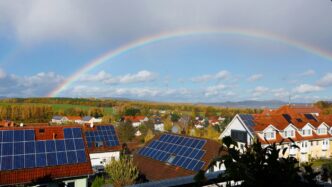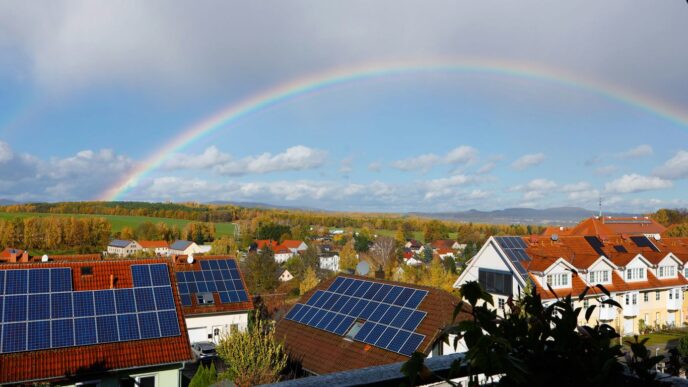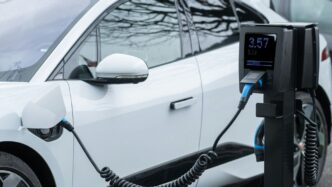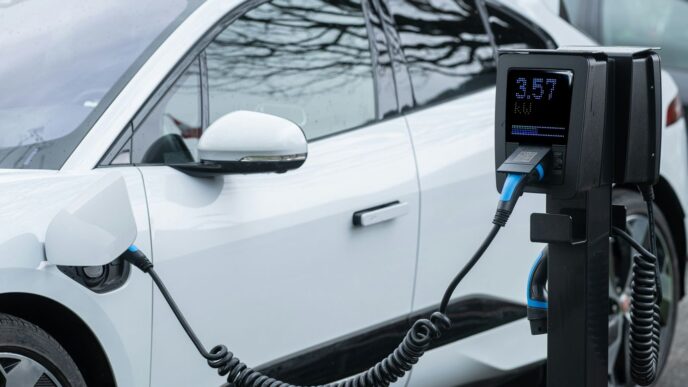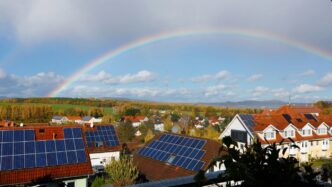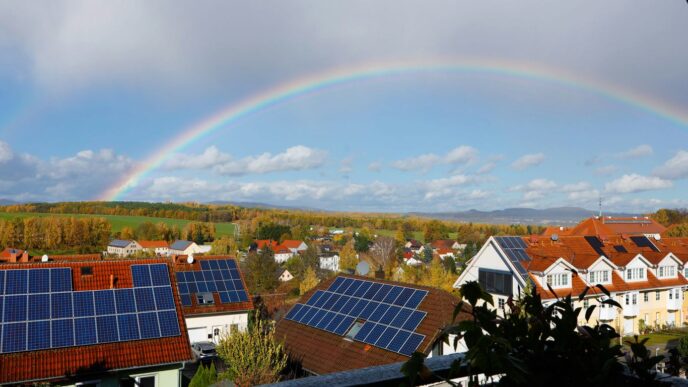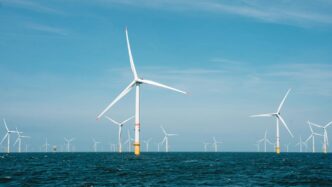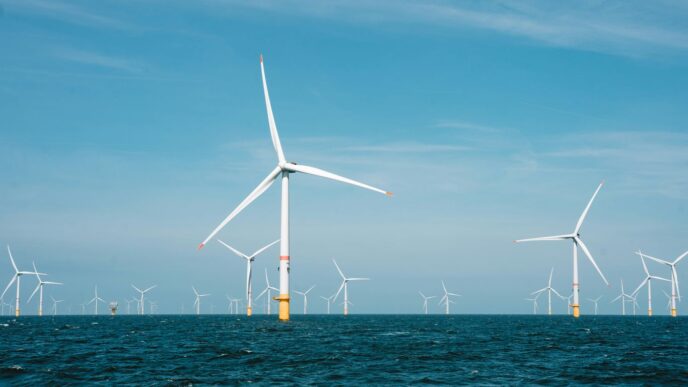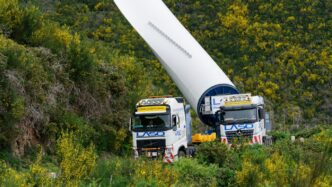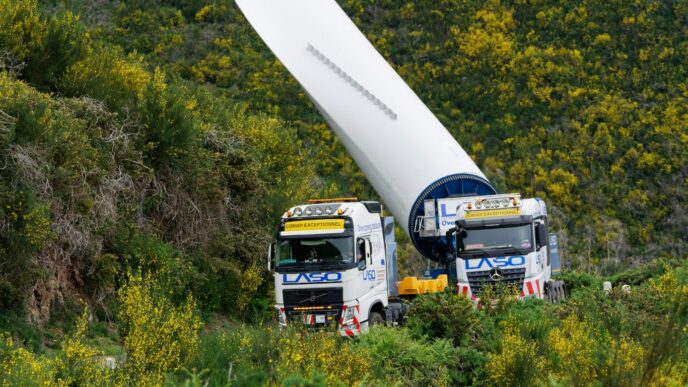Minnesota, a state known for its cold winters and abundant lakes, is increasingly turning to the sun for its energy needs. Solar farms are popping up across the state, and it’s not just about clean energy. These projects bring economic benefits, impact land use, and are becoming a bigger part of Minnesota’s energy plan. Let’s take a look at how solar farms are growing and what that means for the state.
Key Takeaways
- Permitting for solar farms in Minnesota depends on their size, with larger projects (50 MW+) requiring state approval and smaller ones handled locally.
- While there are rules to protect prime farmland, solar development is generally a small fraction of total farmland use, and developers often work with the state to mitigate impacts.
- Solar farms offer economic advantages, including lease payments to landowners (averaging $1,000/acre/year), job creation, and tax revenue for local communities.
- There’s a growing focus on environmental benefits, such as creating pollinator habitats under solar arrays, which can help local ecosystems.
- Minnesota is actively promoting solar energy through state policies, community solar programs, and incentives, showing a strong commitment to solar’s role in its future energy mix.
Understanding Solar Farm Siting In Minnesota
Figuring out where to put a solar farm in Minnesota isn’t as simple as just finding an empty field. There are rules and different authorities involved, and it really depends on how big the project is.
Permitting Requirements By Project Size
When you’re talking about solar farms, size matters when it comes to getting the green light to build. For the really big ones, those capable of generating 50 Megawatts (MW) or more, the state’s Public Utilities Commission (PUC) steps in. They have to approve a site permit before anything can happen. This also applies if several smaller projects are grouped together and, in total, hit that 50 MW mark. It’s a pretty involved process.
For projects smaller than 50 MW, it’s usually up to the local counties or cities to handle the permitting. Each local government might have its own set of rules, like where you can build (setbacks), what kind of zoning is allowed, and other specific requirements. Most of the time, these larger solar projects end up in areas zoned for agriculture, even though many counties have rules to protect farmland. Still, if a project meets the local rules, it often gets a conditional use permit or a variance.
The Prime Farmland Rule
Minnesota has a rule specifically for those big solar farms (50 MW and up) that says they shouldn’t be built on "prime farmland" if possible. Prime farmland is basically the best land for growing crops. The rule limits how much of this top-tier land a large solar farm can use – no more than half an acre for every megawatt of power it generates. However, there’s an "out" if there’s no other practical place to put the solar farm. The PUC has used this exception, working with the Department of Agriculture, to allow solar development on prime farmland if the developers agree to manage the land with specific planting plans and ways to lessen the impact on farming.
It’s interesting to think about the scale. Minnesota has a ton of farmland, over 25 million acres. To reach a goal of getting 10% of our electricity from solar, we’d need about 60,000 to 100,000 acres. That’s a pretty small slice of all farmland, and even smaller compared to the land lost each year to housing and commercial development. Plus, not all solar development uses farmland; a lot can go on rooftops or other unused spaces.
Siting Authority Differences
So, who gets the final say on where a solar farm goes? It depends. For projects 50 MW or larger, the state PUC is usually in charge. They first decide if the state actually needs the new power source, looking at things like energy forecasts and whether conservation could meet the demand. Even though renewable energy is a priority in Minnesota, developers still have to prove the need.
Here’s where it gets a bit flexible: the law allows local governments (cities or counties) to take over the siting process for these big projects if they want to. They can issue the site permit instead of the PUC. In reality, though, most local governments tend to let the PUC handle it. This is mainly because the PUC has more specialized knowledge, resources, and a process designed for these kinds of big energy projects. It’s a way to balance state goals with local control, though the state usually ends up leading for the largest developments.
Economic Impacts Of Solar Farms In Minnesota

Solar farms are bringing more than just clean energy to Minnesota; they’re also making a noticeable difference in the state’s economy. It’s not just about the big picture of renewable energy goals, but also about the tangible benefits trickling down to local communities and individuals.
Landowner Compensation And Lease Agreements
For many landowners, especially those with farmland, hosting a solar project can be a pretty sweet deal. Developers typically offer long-term lease agreements, paying a yearly rent for the land used. We’re talking about payments that can often be higher than what you’d get from traditional crops. For instance, leases in Minnesota can average around $1,000 per acre annually. Some developers might even buy the land outright, which is a whole different ballgame for the landowner. This provides a steady income stream, which is a big help when you consider how unpredictable farming can sometimes be with weather and market prices.
Job Creation And Workforce Development
The solar industry is a growing source of jobs right here in Minnesota. Think about all the people needed to build, install, and maintain these solar farms. According to recent reports, Minnesota has thousands of jobs in the solar sector, with a large chunk of those being solar installers. The state is also working on training programs to make sure there are enough skilled workers to keep up with the demand. It’s a positive cycle: more solar projects mean more jobs, and more trained workers mean more projects can get done.
Tax Revenue Generation For Local Communities
Solar farms also contribute to local economies through taxes. These projects can be taxed in a few ways, including on energy production and property. In the past, solar companies have paid significant amounts in production taxes to counties and townships. This extra revenue can be a big boost for local governments, helping to fund public services and infrastructure without necessarily raising taxes on residents. It’s a way for communities to benefit financially from hosting these clean energy sites.
Environmental Considerations For Minnesota Solar
When we think about solar farms, it’s easy to just picture rows of panels soaking up the sun. But there’s more to it, especially here in Minnesota. We’ve got to think about how these big projects fit into our landscape and what that means for the critters and plants around them.
Wildlife Habitat Beneath Solar Arrays
It might seem counterintuitive, but the land under and around solar panels can actually become a pretty good spot for wildlife. Instead of being tilled for crops year after year, these areas can be turned into meadows or prairie habitats. This means more food and shelter for insects, birds, and small mammals. Many projects are now intentionally planting native wildflowers and grasses, which is a win-win for both the environment and the solar farm’s appearance. It’s a shift from just seeing it as unused space to seeing it as an opportunity to bring back some of the natural beauty we have in Minnesota.
Pollinator Health and Solar Projects
Speaking of wildflowers, they’re a big deal for our pollinators – bees, butterflies, and other helpful insects. These guys are super important for our ecosystem and for agriculture. Solar farms can actually help them out. By planting diverse native flowers, we create corridors of food and habitat for pollinators that might otherwise struggle to find what they need. It’s a way to support these vital creatures while also developing renewable energy. Some studies are looking into how different types of ground cover affect pollinator populations, trying to find the best mixes.
Minimizing Land Use Impact on Farmland
This is a big one for Minnesota, where farming is a huge part of our identity and economy. Nobody wants to see prime farmland disappear under solar panels. The state has rules, like the Prime Farmland Rule, to try and protect the best agricultural land. Developers often look for less productive land, or areas that are already disturbed, for their projects. It’s all about finding a balance. We want clean energy, but we also need to keep our farms healthy and productive. Careful planning can help ensure that solar development doesn’t take away too much from our agricultural roots.
Minnesota’s Commitment To Solar Energy
State Policies Encouraging Solar Growth
Minnesota has really stepped up its game when it comes to solar energy. It’s not just about individual homeowners putting panels on their roofs anymore; the state has put some solid policies in place to get bigger solar projects, like solar farms, up and running. They’ve got rules that help make sure these projects can get approved and built without too much hassle, which is a big deal when you’re talking about large-scale energy production. This proactive approach is a major reason why Minnesota is seeing such a boom in solar capacity.
Community Solar Initiatives
One of the coolest things Minnesota has done is push for community solar. This is a fantastic way for people who can’t install solar on their own property – maybe they rent, or their roof isn’t suitable – to still get in on the solar action. You can subscribe to a share of a local solar farm, and then you get credits on your electricity bill for the power your share produces. It’s a really smart way to spread the benefits of solar energy around to more people and communities across the state.
Incentives and Rebates For Solar Adoption
Let’s be honest, putting in solar panels or subscribing to a community solar project can be an upfront cost. Minnesota gets that. That’s why they’ve put together a bunch of incentives and rebates to help make it more affordable. These programs can really take the sting out of the initial investment, making solar a much more attractive option for both residents and businesses. It shows a real commitment from the state to make clean energy accessible.
Here’s a quick look at some of the ways Minnesota helps:
- Tax Credits: Both federal and state tax credits can significantly reduce the cost of installing solar systems.
- Rebate Programs: Specific programs are available that offer direct financial rebates for solar installations.
- Net Metering: This policy allows you to get credit on your electricity bill for the excess solar power your system sends back to the grid, effectively lowering your overall energy costs.
The Role Of Solar Farms In Minnesota’s Energy Future
Solar farms are becoming a bigger part of how Minnesota gets its power, and it’s pretty interesting to see how they fit into everything. Even with our chilly winters, solar is proving to be a solid player. It’s not just about adding more clean energy; it’s about making our whole power system work better and more reliably.
Grid Stability and Energy Independence
One of the big deals with solar farms is how they help keep the lights on. When you have lots of solar power spread out, it makes the whole electrical grid stronger. Think of it like having many small power sources instead of just a few big ones. This makes us less dependent on energy sources from far away, which is good for our energy security. It means Minnesota can generate more of its own power, right here at home.
- Reduces reliance on imported fuels: More local solar means less need for out-of-state fossil fuels.
- Diversifies energy sources: A mix of energy types makes our system more robust.
- Supports local infrastructure: Solar farms can help meet demand during peak times, like hot summer afternoons when everyone’s running their air conditioners.
Compatibility With Agricultural Practices
There’s been a lot of talk about whether solar farms and farming can coexist. The good news is, they often can. Many solar projects are being built on land that isn’t the best for growing crops, or they’re designed in ways that allow for farming underneath or around the panels. This is sometimes called ‘agrivoltaics’.
- Dual land use: Some projects allow for grazing sheep or growing certain crops beneath the panels.
- Landowner benefits: Farmers can earn extra income from leasing land for solar, which can help keep farms viable.
- Habitat creation: The land around and under solar arrays can be used to plant native grasses and flowers, which is great for pollinators and wildlife.
Minnesota’s Solar Potential Despite Climate
It might seem odd to think of solar power in a state known for snow, but Minnesota actually has a good amount of sunshine. Solar panels work even when it’s cold – in fact, they can be more efficient in cooler temperatures. This means we can generate a good amount of electricity year-round. The state has already installed a lot of solar capacity, and that number is growing fast. It shows that with the right technology and planning, solar energy is a real option for Minnesota’s future, no matter the weather.
| Year | Total Solar Capacity (MW) |
|---|---|
| 2020 | ~1,300 |
| 2022 | ~1,800 |
| 2024 (Projected) | ~2,500 |
Looking Ahead for Solar in Minnesota
So, what does all this mean for Minnesota? It looks like solar farms are here to stay and likely to grow. They’re bringing in tax money, paying landowners, and creating jobs, which is pretty good for the economy. Plus, there’s a real effort to make sure these farms don’t mess too much with farmland or wildlife, with new ideas like planting pollinator-friendly stuff around the panels. While there are rules to follow, especially for bigger projects, it seems like Minnesota is figuring out how to balance adding solar power with keeping its land and natural spaces in good shape. It’s a big shift, and it’s going to be interesting to see how it all plays out across the state.


